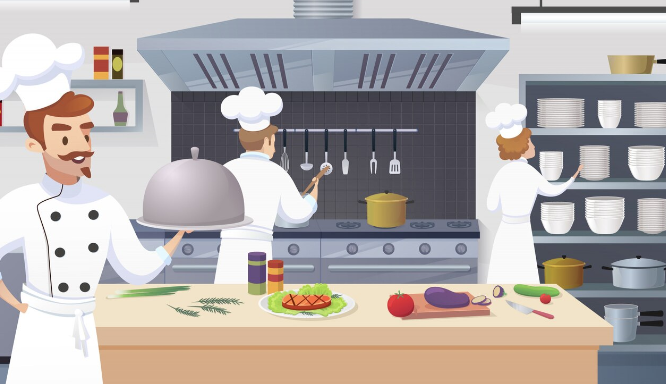How Versatile Kitchen Equipment Helps Handle Diverse Menus

Running a successful restaurant or foodservice business often means catering to a wide range of customer preferences and menu offerings. Whether it’s a trendy bistro, a busy café, or a fine dining establishment, the ability to craft and execute diverse menus requires reliable, adaptable, and versatile kitchen equipment. Investing in the right tools not only streamlines kitchen operations but also boosts creativity, allowing chefs to prepare a variety of dishes efficiently. In this article, we’ll explore how versatile kitchen equipment enhances menu diversity and keeps your kitchen running smoothly.
1. Flexibility in Cooking Techniques
One of the biggest advantages of versatile kitchen equipment is its ability to accommodate different cooking techniques. A well-equipped kitchen with multi-functional appliances enables chefs to experiment with various methods, from grilling and frying to baking and steaming. For example:
- Combination Ovens: A combi oven allows for baking, steaming, and convection cooking, all in one unit. This flexibility enables chefs to switch between roasting a succulent piece of meat and steaming delicate vegetables without needing separate appliances.
- Griddles with Adjustable Heat Zones: A commercial griddle with multiple temperature zones allows chefs to cook different foods simultaneously. One section can be used for grilling meats while another is set at a lower temperature for sautéing vegetables or preparing pancakes.
- Multi-cookers: These devices combine the functions of pressure cookers, slow cookers, steamers, and even air fryers, offering various cooking methods in a single appliance.
This adaptability is crucial in kitchens that need to manage different cuisines or menu styles, allowing the same equipment to handle varied tasks without compromising on quality.
2. Streamlining Food Preparation
Versatile kitchen equipment helps streamline food preparation, particularly in restaurants where time is of the essence. Tools that can be used for multiple tasks reduce the need to constantly switch between different pieces of equipment, saving both time and space. For instance:
- Food Processors: A high-quality food processor can chop, slice, dice, and blend ingredients, cutting down prep time significantly. With interchangeable blades, it can handle tasks from pureeing sauces to kneading dough, making it invaluable for kitchens that serve a wide variety of dishes.
- Stand Mixers with Attachments: A commercial stand mixer can do much more than just mix dough. With the right attachments, it can grind meat, spiralize vegetables, and even roll pasta. This versatility makes it a go-to tool for chefs handling different types of cuisine.
These tools not only improve efficiency but also maintain consistency, a critical factor when serving diverse menus with numerous dishes.
3. Accommodating Changing Menus and Seasonal Ingredients
As many restaurants now offer seasonal or rotating menus to keep things fresh and exciting, having flexible kitchen equipment becomes even more critical. The ability to adapt quickly to changes in the menu is key to staying competitive and delighting customers.
- Induction Cooktops: Induction cooktops offer a quick and precise way to cook a variety of dishes. These portable, energy-efficient units heat up and cool down rapidly, making them ideal for restaurants that frequently switch between cooking methods or work with varying ingredient types.
- Adjustable Fryers: Multi-functional fryers can handle everything from deep frying to shallow frying and even poaching. This is useful for seasonal items such as seafood, which may require different frying techniques.
By investing in adaptable equipment, you can easily incorporate seasonal ingredients, new dishes, or chef-inspired specials into your menu without having to overhaul your kitchen setup.
4. Maximizing Space in Smaller Kitchens
For restaurants working with limited space, versatile kitchen equipment can be a game-changer. Compact, multi-use appliances reduce the need for multiple devices, freeing up valuable counter space and improving workflow in small kitchens. Some examples include:
- Countertop Combi Ovens: These smaller versions of the combi oven offer the same functionality as their larger counterparts but take up less space, making them perfect for small commercial kitchens.
- Compact Blenders and Mixers: High-powered, compact blenders can blend sauces, chop herbs, and even crush ice, allowing you to use the same piece of equipment for different tasks, reducing clutter.
- Stackable Refrigeration Units: Compact, stackable refrigerators or freezers provide necessary cold storage without taking up too much floor space, allowing chefs to store a variety of ingredients, from fresh produce to proteins.
By maximizing the use of space, versatile kitchen equipment enables even small kitchens to produce diverse menus without compromising quality or efficiency.
5. Supporting Menu Innovation
A restaurant’s ability to innovate and introduce new flavors or dishes is often limited by the kitchen’s capabilities. Versatile kitchen equipment encourages creativity by making it easier for chefs to experiment with new recipes and cooking techniques. For example:
- Sous Vide Equipment: Sous vide cooking has become popular for its ability to cook food evenly and retain flavors. A sous vide machine can be used to prepare everything from steaks to vegetables, and having this tool in your kitchen opens up new possibilities for menu development.
- Modular Cooking Stations: These stations allow for a range of cooking techniques in one area. For instance, a modular cooking station could combine an induction cooktop, grill, and oven, making it easy to experiment with different cooking styles.
Innovative kitchen equipment allows chefs to push the boundaries of traditional cooking, creating exciting new dishes that appeal to diverse customer preferences.
6. Improving Workflow and Reducing Stress
When kitchen equipment is organized and versatile, it improves workflow and reduces stress for chefs and kitchen staff. Instead of juggling multiple appliances for different tasks, having multi-functional equipment simplifies the cooking process. This is especially important during busy service times when efficiency is key to delivering quality dishes on time.
- Integrated Cooking Systems: Appliances that combine various cooking methods in one system—such as ovens that can bake, steam, and grill—help reduce clutter and streamline operations. This simplifies the cooking process, allowing chefs to focus on delivering quality rather than managing equipment.
- Easy Maintenance and Cleaning: Many versatile pieces of kitchen equipment are designed for easy maintenance and cleaning. Tools that are easy to disassemble and clean save time in the kitchen and help maintain high standards of hygiene.
By reducing the complexity of kitchen operations, versatile equipment creates a smoother, less stressful working environment, helping staff stay focused and productive.
Conclusion
Versatile kitchen equipment is essential for handling diverse menus in commercial kitchens. It allows chefs to adapt to different cooking techniques, streamline food preparation, and manage limited space, all while fostering menu innovation. Whether you’re running a small café with a rotating seasonal menu or a large restaurant serving multiple cuisines, investing in multi-functional equipment will boost efficiency, creativity, and overall kitchen performance.
By choosing versatile equipment, your kitchen can handle any menu, from classic staples to innovative dishes, keeping customers coming back for more.



